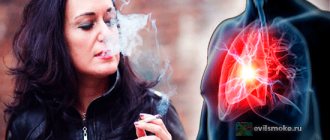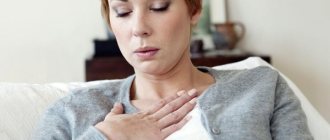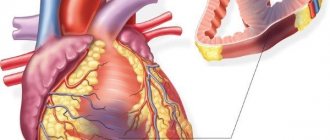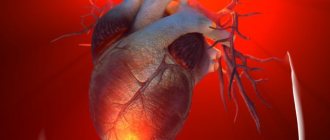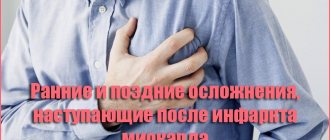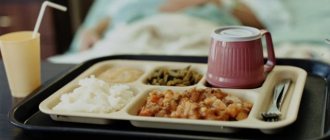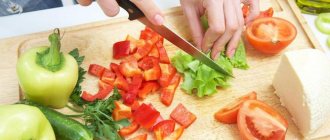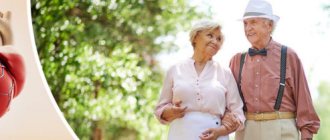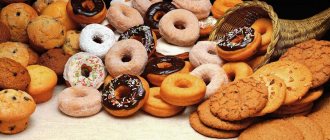The latest research by scientists has revealed that a serious complication of coronary heart disease - myocardial infarction - today is increasingly affecting not only men aged sixty years and older, but also twenty- and thirty-year-old representatives of the stronger sex. In order to restore vital functions after a heart attack, resume optimal activity and reduce the risk of relapse, each of them needs to carry out proper healing of the body, the most important factor of which is diet after myocardial infarction for men.
Only one exclusion from the diet of animal fats - a source of cholesterol that causes the growth of plaques in blood vessels and the progression of atherosclerosis - is not enough, although it is very important. What foods can you eat during the acute period, in the first month after a heart attack, and what foods can you treat yourself to during rehabilitation?
Nutrition in the first days
The first week after a heart attack is the acute post-infarction stage.
It is on these days that sharp exacerbations and repeated attacks are possible. The question of what you can eat after a heart attack requires a special approach associated with following a strict diet. It is important to provide fractional meals in small portions, up to 7 times a day. All products can only be consumed pureed, boiled or stewed. The use of salt in the diet after a heart attack is prohibited. Bread can only be consumed in the form of crackers. Boiled lean meat is allowed.
Is it possible to bring food to the hospital?
During the acute period, a patient who has had a heart attack may be in the intensive care unit. No transmissions are accepted here. If he is transferred to the general ward, then the diet allows the following foods:
- pureed soups;
- liquid porridge;
- vegetable stew;
- low-fat fermented milk products;
- omelette;
- decoctions;
- carrot juice.
But it is better to check the list of permitted products in a particular hospital.
Principles of nutrition during myocardial infarction
Nutrition after a heart attack should provide the body with the necessary energy, while simultaneously helping to solve the following problems:
- restoration of myocardial functions and scarring of the necrosis zone;
- maintaining body weight at a normal physiological level;
- normalization of sugar and cholesterol;
- increased blood flow.
When organizing a therapeutic diet, the following principles are used:
- Dividing the rehabilitation period into 3 stages: acute (7 days), subacute (2nd and 3rd weeks) and the scarring stage (from the 4th week until recovery). Each stage has its own diet.
- Calories and volume. In the first days they are set at a minimum level (up to 1300 kcal) with a gradual increase: in the second stage 1800 kcal and in the third - up to 2400 kcal.
- Fractionality of nutrition. In the acute period, frequency: 6 – 7 times, and then 4 – 5 times a day.
- Refusal to consume foods high in animal fat and cholesterol. The required amount is provided by vegetable fats (olive oil, nuts, etc.).
- Optimal food temperature. Cold or excessively hot food is not allowed.
- Table salt is significantly limited, and at the first stage excluded.
- Limiting free fluid intake.
- It is recommended to exclude “fast” carbohydrates, giving preference to “slow” carbohydrates (cereals, brown bread).
- Particular attention is paid to microelements and vitamins. Their main sources are seafood and dried fruits.
- Avoid consumption of fried foods and limit baked foods.
If the patient has other pathologies, appropriate adjustments are made to the diet. Diabetes mellitus requires a special diet and the exclusion of foods with glucose.
Another common problem is excess weight. With this diet, the calorie content of food is reduced.
Diet No. 10
It is prescribed after the end of a heart attack for 2-3 days.
Her goal:
- Creating optimal conditions for the active course of recovery processes in the heart muscle.
- Activation of metabolic and neurohumoral processes and the functioning of the circulatory system.
- Prevention of complications, such as the formation of new blood clots in blood vessels.
- Minimizing the load on the cardiovascular system.
- Regulation of normal intestinal motility.
One of the principles of nutrition after a heart attack is limiting portion sizes and calorie content.
Avoid products containing animal fats and, consequently, cholesterol:
- liver, kidneys, brain,
- fatty meats and fish,
- egg yolk,
- sturgeon caviar, etc.
Products containing salt, sugar, nitrogenous substances and extracts, whole milk, legumes, etc. are strictly prohibited.
At the same time, products with lipotropic action are recommended . They are necessarily included in therapeutic diets to lower cholesterol. These are products such as beef, seafood, low-fat sea fish, low-fat cottage cheese, soybeans and soybean flour.
The entire diet is divided into three diets . The first is prescribed in the acute period of myocardial infarction. It lasts for 7-10 days. The second nutrition option is intended for the subacute period (second, third week after the attack). The patient should receive fractional meals - up to 8 times a day.
Portions should be small, not exceed 50 g. These can be decoctions, liquid milk porridges, pureed vegetable soups, vegetable purees, carrot juice. Table salt should be completely eliminated from food. The number of calories should not exceed 1000.
The second diet differs little from the first. It should also be salt-free, steamed or stewed. The diet includes dishes containing lipotropic compounds. The number of meals is reduced to 6.
During scarring of the heart muscle (approximately the third week after a heart attack), you can include bran, dried fruits and nuts in your diet. The calorie content increases to 2000.
Features of diet preparation
When developing a diet, the following recommendations should be taken into account:
- Mandatory consumption of vegetables (at least 300 g per day) and fruits (more than 150 g).
- Whole grain bread products are introduced into the menu, and pasta products should be made from durum wheat varieties.
- Meat – only lean. The skin is removed from the poultry meat.
- Seafood and fish are consumed at least 3 times a week.
- At least 2 times a week, dishes from legumes (peas, lentils, dried beans) are prepared.
- Eggs (white only) can be eaten up to 6 eggs per week (boiled or in the form of an omelet).
- Exclusion of marinades and pickles.
- Dairy and fermented milk products should be used in a low-fat version.
- You can safely use vegetable oils: sunflower, olive, soybean, sesame.
- Sweet drinks should be limited. It is better to replace coffee with a coffee drink.
It is important to understand that dietary restrictions should not affect the energy value of food. The lack of salt impairs the taste, which can be corrected by drinking tomato juice or sweet and sour drinks, or adding lemon juice.
Prohibited Products
When planning a diet, you should consider the following list of foods prohibited after a heart attack:
- white and fresh bread;
- baked goods;
- baking;
- fatty meat products and fish;
- liver;
- offal (including brains);
- sausages;
- canned products;
- caviar;
- milk and cream;
- egg yolk;
- millet, pearl barley and barley;
- cabbage;
- cucumbers;
- radish;
- onion;
- garlic;
- starch (including sweet);
- chocolate and confectionery;
- coffee and cocoa;
- grape juice;
- spices;
- pates;
- sausages and sausages;
- margarine.
You should not eat salty, pickled, smoked, or overly sweet foods.
What can you eat after a heart attack?
What can you eat after a heart attack? Preference should be given to such useful products:
- Meat products: lean beef, lean chicken, turkey, rabbit, wild bird and animal meat (for example, hare).
- Olive, sunflower, corn oil.
- Dairy products: skim milk, low-fat cheese, low-fat kefir.
- Fish: lean cod, flounder, any herring, mackerel, tuna, salmon.
- Almost all fresh fruits and boiled vegetables, boiled potatoes, walnuts, dried fruits.
- Bakery products from wholemeal flour, crackers, Borodino bread.
- Cereals: oatmeal and wheat, unpolished rice.
- Desserts: low-calorie puddings, jelly, sherbet, oatmeal cookies.
- Drinks: weak tea, mineral water, unsweetened fruit juices and other low-sugar drinks.
These products can be consumed at any stage of rehabilitation.
Strict dietary restrictions apply at the first stage, but then other foods with limited use are gradually added.
Treatment
The risk of thrombosis is considered one of the most dangerous phenomena in the post-infarction state. To reduce it, nutrition must be supplemented with medication measures. The diet must be combined with taking medications that improve the rheological parameters of the blood. The most common drug is acetylsalicylic acid, i.e. Aspirin.
In inpatient and hospital settings, modern drugs based on this acid are used. One of the effective remedies is Thrombo ACC tablets. These tablets have an enteric coating, which avoids complications in the gastrointestinal tract.
Diets by numbers to follow
After a heart attack, the patient is prescribed therapeutic nutrition, which is based on a diet with an assigned number. During the acute period, Table No. 10I is used.
This diet involves frequent, fractional consumption of food, and it ends 3 hours before bedtime. All restricted foods are excluded from the diet. In the diet, priority is given to products with dietary fiber (vegetables, fruits, cereals), as well as “white” fish.
At the second stage of rehabilitation, you should switch to Table No. 10. The energy value of such a diet is 2200 – 2400 kcal per day. The diet is enriched with vitamins A, C and D. It includes lean meat, vegetable fats and various vegetables and fruits containing essential microelements (potassium, manganese, magnesium, iodine, etc.).
Key points of a therapeutic diet
In the first days after suffering a “heart rupture” (as myocardial infarction was mistakenly called in the old days), it is vitally important to follow the nutritional recommendations of your doctor. Typically, during the acute period (during the first week), cardiologists recommend six or even eight meals a day with pureed dishes (in small portions). This could be liquid porridge or low-fat dairy drinks, diet mashed potatoes with a delicate consistency or other pureed vegetables, carrot juice, enriched with a couple of tablespoons of olive oil (or any other vegetable). Salt is strictly prohibited during this period! The last meal for the patient, on the advice of doctors, should be organized no later than three hours before bedtime. Scarring after a heart attack usually occurs in the first two to three weeks, so in the second stage (in the next seven to ten days of the subacute period), the patient's relatives should prepare fresh, crushed food for him six times a day.
These can be steamed cutlets, meatballs made from lean meats or fish; viscous buckwheat porridge or semolina casserole (without salt and sugar!), to which you can add a little honey; cauliflower, fresh carrot salad, boiled vegetables or baked potatoes and other unsalted dishes. They need to be consumed in small portions, 5-6 times a day. At the third stage (from the beginning of the fourth week) during the period of scarring, the diet after myocardial infarction for men includes a low-calorie menu that limits the consumption of sodium chloride (table salt) and liquid (no more than one liter per day). At this time, doctors advise feeding the patient not only vegetarian soups, but also low-fat meat broth, steamed cutlets, lean meat (boiled), stewed or boiled fish fillets, pureed cottage cheese and low-fat unsalted cheese, ripe tomatoes and stewed vegetables (beets and carrots) ; boiled vermicelli, semolina casserole with apples, buckwheat-curd pudding.
Diet during different periods of a heart attack
At each stage of post-infarction treatment, a special approach to the formation of a diet is required. It is based on a strict diet immediately after the incident with a gradual weakening of the regime and an expansion of the list of permitted products.
Diet for the acute period
The first diet is based on the following principles:
- energy value – 1150–1300 kcal;
- protein content – 55 g, vegetable fats – no more than 70 g, carbohydrates – 180 – 210 g;
- requirement for vitamins: A, B1 and B2 – at least 2 mg, PP – 15 mg, C – 100 mg;
- free liquid – no more than 850 ml;
- maximum total salt content – no more than 2 g;
- daily norm – 1700 g.
Diet for the subacute period
When compiling a second diet after a heart attack, the following parameters are recommended:
- energy value – 1500–1800 kcal;
- protein and fat content – 55–75 g, carbohydrates – 235–260 g;
- the vitamin composition is similar to the first diet;
- total volume of free liquid – up to 1 l;
- total salt content – no more than 2 g;
- total food weight – 2000 g
Diet for the scarring stage
At the final stage of rehabilitation after a heart attack, the calorie intake increases:
- energy value increases to 2350 – 2400 kcal;
- protein content: 80 – 95 g, fat: 75 – 85 g, carbohydrates: 320 – 360 g;
- the content of vitamins and salt is retained from previous diets;
- free liquid – no more than 1 l;
- total weight – 2300 g.
When compiling a diet, the individual characteristics of the body and the progress of rehabilitation are taken into account.
Authorized Products
After stenting of the coronary vessels of the heart, it is necessary to add foods containing fiber, polyunsaturated fatty acids and carbohydrates to the daily diet.
Soups made with vegetable broths with the addition of cereals, such as borscht, beetroot soup or cabbage soup, are useful.
List of permitted products:
- veal;
- chicken;
- lean beef;
- cod;
- mussels;
- hake;
- shrimps;
- rabbit;
- seaweed;
- squid.
Advice! To dress salads, use cold-pressed sunflower and olive oil.
Eat as many fruits and vegetables as possible. Freshly squeezed juices from berries and fruits are useful. Cereals, almonds and fresh herbs will be of great benefit. To improve blood circulation, it is recommended to consume wheat bran and rosehip decoction.
Nutrition for men
The post-infarction diet should take into account the gender of the person. For men and women it is formed according to different principles. Organization of nutrition after myocardial infarction for men takes into account that the most common cause is atherosclerosis. With this in mind, the main goal of the diet is to reduce cholesterol levels.
Basic principles of creating a men's diet:
- using only vegetable oil;
- complete exclusion of butter from the diet;
- minimal consumption of foods that are sources of cholesterol;
- increased consumption of foods with fiber (vegetables, fruits);
- mandatory consumption of foods containing omega-3 acids (seafood, fish)
If a diet is prepared for men after a heart attack and stenting, the menu focuses on carbohydrates. You should eat dried fruits and nuts every day.
Foods to include in the post-MI diet
Men after myocardial infarction should include a number of foods rich in heart-healthy components in their daily diet:
- Whole grains
“All whole grains are good, but barley and oats have something special—a fiber called beta-glucan,” says nutritionist/dietician Jill Weisenberger. “This fiber prevents cholesterol from being absorbed in the digestive tract, thereby preventing it from entering the general bloodstream.” Other good choices are buckwheat, bulgur, whole wheat and millet.
Bulgur is wheat grain that has been processed with boiling water. Widely used in India, Pakistan, the Caucasus and the Middle East.
- Fruits and vegetables
“Fresh fruits and vegetables are an excellent source of potassium, which can reduce the adverse effects of sodium and lower blood pressure,” Weisenberger says. “Berries, in particular, are very good for the heart.” Pears and apples may help reduce the risk of stroke. Bell peppers, tomatoes, carrots and leafy green vegetables are all excellent sources of vitamins and carotenoids, a type of antioxidant, to promote overall health. Cranberry is another good choice because it helps reduce inflammation and helps dilate blood vessels. “Try to eat a fruit or vegetable at every meal and snack,” Weisenberger says.
- Healthy fats
Not all fats are bad. You just need to choose “healthy” unsaturated fats and limit the amount of fat you eat overall, because all fats are high in calories. Weissenberger says fish rich in omega-3 fatty acids—lake trout, mackerel, herring, salmon, sardines and albacore tuna—are good for the heart. “The fats they contain may reduce the risk of abnormal heartbeats and reduce the formation of blood clots.” This will undoubtedly reduce the risk of developing recurrent myocardial infarction. Olive and canola oils are also an excellent source of healthy fats and a good replacement for regular butter. “When some of the saturated fats—butter, tallow and bacon, for example—are replaced in the diet with unsaturated fats, cholesterol levels normalize,” says the nutritionist.
- Nuts, beans and seeds
There is no doubt that beans are good for the heart. “They help lower blood pressure and reduce the risk of heart attack,” says Weisenberger, who recommends eating at least four servings of beans for lunch each week. Walnuts, almonds and other nuts and seeds are also important for heart health. “When you eat these foods regularly, you can reduce your low-density lipoprotein (LDL) or “bad” cholesterol,” says the doctor.
- Dark chocolate
If you really want something sweet, you should give preference to dark chocolate. Rich in flavonoids—another type of antioxidant—dark chocolate can help lower blood pressure and reduce the inflammation that often affects the vascular intima, especially in the development of atherosclerosis.
- Freshly prepared tea
When you need something to calm down, it is better to turn to tea. Rich in flavonoids, tea may help reduce the risk of heart attack and stroke, as well as normalize blood pressure. However, you should not drink store-bought bottled tea because it contains a small amount of flavonoids.
Diet for females
The post-infarction diet for women takes into account that their pathology is most often accompanied by diabetes mellitus. The most important task of rehabilitation is normalization of blood glucose.
Basic rules for women's diet:
- exclusion of sweets and baked goods;
- maximum consumption of vegetables and fruits;
- exclusion of foods that increase blood pressure (caffeine-containing, carbonated products);
The medical experts say the following about what women can eat during a heart attack. The following products are recommended: buckwheat porridge, pine nuts, avocados, watermelon, raisins, apricots, baked potatoes, bananas, low-fat cheese and cottage cheese, low-fat fish, apples, cranberries, carrot and beet juice. Sugar should be replaced with natural honey or nectarine.
Rehabilitation
Diet after myocardial infarction for men should exclude any pork dishes. You need to avoid shrimp and squid, red or black caviar, salty cheeses and sausages.
The duration of rehabilitation depends on the severity of the infarction, the extent of myocardial damage, the patient’s age, and concomitant somatic diseases. So, with a small amount of necrosis, the recovery period takes about six months. An extensive process can double this period. Risk factors that cause circulatory disorders and provoke an attack at the same time aggravate, complicate and prolong the duration of treatment. These include:
- hypertension leading to stroke;
- diabetes;
- cerebral circulatory disorders (ischemic stroke);
- elderly age.
If doctors managed to stop the destructive effects of a heart attack under intensive care conditions, then the patient must follow all recommendations regarding nutrition. After discharge from the hospital, the diet remains according to the diet. This is an important stage after heart attack rehabilitation, which can save and prolong life.
source
Sample menu for meals by week
A homemade diet in the post-infarction period can be compiled taking into account approximate one-day menus. The first diet may look like this:
- After waking up, drink prune infusion on an empty stomach.
- Breakfast: buckwheat porridge, low-fat cottage cheese, coffee drink (barley).
- Lunch: fruit puree (can be made from apples), rosehip decoction.
- Lunch: broth, boiled chicken, currant jelly.
- Afternoon snack: pureed cottage cheese, grated carrots, rosehip infusion.
- Dinner: boiled fish, carrot puree, weak tea with lemon.
- Before going to bed, you can eat prunes soaked in water.
At the next stage of treatment, you can use the following diet:
- Breakfast: milk rice porridge, egg white omelet, coffee drink.
- Lunch: cauliflower, croutons, rosehip infusion.
- Lunch: vegetarian borscht, boiled beef with fruit sauce.
- Afternoon snack: applesauce, rosehip infusion.
- Dinner: boiled meat, buckwheat porridge.
- In the evening: a glass of kefir.
In the menu, it is important to control the content of salt (no more than 2 g per day), sugar, and the presence of fat.
Three diets of diet No. 10 B
After a myocardial infarction, patients are prescribed diet No. 10 B, which consists of three gradually prescribed diets:
- Diet I (the first 7 days after a heart attack) - food should be prepared gently (steamed or boiled followed by mashing) and consumed 6-7 times a day in small portions;
- diet II (2-3 weeks after a heart attack) - food should be prepared gently (steamed or by boiling or stewing followed by chopping) and consumed 6 times a day in small portions;
- diet III (from the 4th week) - food can be consumed in crushed form or in pieces 5 times a day in small portions.
Diet I
Diet I should contain:
- proteins, fats and carbohydrates - 60 g: 30 g: 180 g;
- 1100-1300 kcal;
- liquid - up to 0.7-0.8 l;
- salt is completely excluded.
The total weight of the first ration should not exceed 1700 g. Dishes should be steamed or boiled and served warm and pureed 6-7 times a day.
With diet I, the menu may include:
- first courses cooked in vegetable broth with pureed cereals, vegetables and egg flakes;
- mashed cottage cheese;
- steamed meatballs, dumplings or cutlets made from lean beef;
- boiled lean fish;
- egg white omelette;
- pureed oatmeal or buckwheat porridge with milk;
- semolina;
- crackers (up to 50 g);
- puree made from boiled carrots, beets or potatoes;
- low-fat kefir;
- jellies, fruit drinks and mousses;
- weak tea with lemon or with added milk;
- infusion of prunes, raisins or dried apricots;
- juices: diluted with water, fruit, carrot or beetroot;
- rosehip decoction;
- liquid jelly;
- alkaline mineral water (still).
All drinks should be warm or at room temperature and consumed in small volumes 8 times a day. Milk, refined vegetable oil and butter should only be added to dishes.
Diet II
Diet II should contain:
- proteins, fats and carbohydrates - 80 g:50 g:200g;
- no more than 1600-1800 kcal;
- liquid - 0.8 l;
- salt - 3 g.
The weight of the entire diet should be no more than 2000 g. Dishes should be steamed, boiled or stewed and served warm, chopped or mashed, 6 times a day.
With diet II, the menu may include:
- first courses prepared in vegetable broth with well-cooked vegetables, cereals or fruits;
- boiled or chopped lean meats and fish or minced meat dishes;
- curd puddings with the addition of cereals, berries and fruits;
- casserole from semolina and other cereals;
- low-fat and unsalted cheese;
- viscous and liquid unpureed porridges made from buckwheat, semolina and oats;
- dried wheat bread or crackers up to 150 g (or 200 g wheat and 50 g rye bread);
- mashed boiled potatoes, beets and carrots;
- baked apples;
- raw soft fruits and berries without coarse fiber;
- raw carrots, grated;
- cauliflower dishes;
- low-fat cottage cheese and cheese (not salted);
- kefir;
- compotes and fruit drinks;
- fruit and milk jelly;
- jelly;
- mousses;
- weak tea;
- sugar up to 50 g.
Milk, refined vegetable and butter (up to 5 g) oil should be added only to sauces or dishes. To improve the taste, boiled and lightly fried onions, tomato, lemon and fruit juices, sweet and sour sauces on a fruit, vegetable or dairy basis can be added to dishes.
Diet III
Diet III should contain:
- proteins, fats and carbohydrates - 90 g: 50-70 g: 300-320 g;
- 2100-2300 kcal;
- liquid - up to 1 l;
- salt - 5 g.
The weight of the entire diet should be no more than 2300 g. Food can be prepared by boiling, stewing or steaming and served chopped or in pieces. Number of meals - 5 times a day. In addition to the dishes of diets I and II, the following can be added to diet III:
- yesterday's wheat bread up to 150 g (or crackers, or 100 g wheat and 50 g rye bread);
- first courses cooked in low-fat, weak meat or vegetable broth;
- boiled jellied fish and meat;
- well-soaked herring;
- ripe tomatoes;
- lean ham;
- stewed beets with carrots;
- boiled pasta with added cottage cheese;
- semolina casseroles with berries, apples or other fruits;
- curd puddings with cereals, carrots, and fruits;
- butter up to 10 g (only for dishes).
Cooking rules
Dietary dishes are prepared by boiling or stewing.
In the diet after a heart attack, frying is excluded. During the acute period, all products are subjected to rubbing, and at the second stage - grinding. Products in the form of pieces can only be consumed at the third stage of treatment. If there are fatty areas on the meat, they are cut off. You should eat only lean meat. All dishes are prepared without salt. Cold foods with a temperature below 12 degrees should not be served.
Principles of nutrition during myocardial infarction
The state of complete or partial narrowing of the lumen of the vessel feeding the heart causes necrosis of its muscle - a heart attack. This is a life-threatening disease. The first day the patient was prescribed inpatient bed rest. Recovery, restoration of blood circulation in the affected muscle, its gradual activation is achieved in various ways, not excluding nutrition. The diet after a heart attack has clear restrictions on the amount of water, salt, protein, and cholesterol that should be supplied with food.
Popular and healthy recipes for dishes after myocardial infarction
When organizing a diet after a heart attack, some recipes are especially popular:
- Salad: tomatoes (4 pcs.), cucumber (2 pcs.), green salad, olive oil (3 tbsp. spoons).
- Potato salad: potatoes (4 pcs), cucumber (1 pc), tomato (1 pc), greens, sour cream (3 tbsp).
- Dried fruit soup: dried fruits (200 g), pearl barley (100 g), cinnamon, sour cream (2 tablespoons), orange zest, water (1.5 l).
- Eggplant soup: eggplant (3 pcs), tomato (2 pcs), flour (1 tbsp), herbs, vegetable oil (2 tbsp), water (2 l). You can add some pieces of sausage.
- Rassolnik: potatoes (3 pcs), carrots (1 pc), small onion, rice (2 tbsp), tomato puree (1 tbsp), sour cream (4 tbsp), water (1.5 l) .
- Carrots with cheese: carrots (600 g), cheese (50 g), vegetable oil (50 ml). The cheese is grated.
The recipe for stuffed apples is especially attractive. The core of the fruit is cut out, and boiled chicken (50 g) is placed there. Everything is topped with white sauce and vegetable oil. This dish is baked in the oven.
Nutrition after stenting of the coronary vessels of the heart
There are a number of recommendations that must be followed to avoid complications.
Proper nutrition can speed up the body's recovery process. Food portions should be small, and the number of meals should be at least 6 times.
Food should not be too hot or cold. You should minimize the amount of salt you consume, as it promotes water retention in the body. As a result of salt abuse, edema and heart problems occur.
On a note! The diet should contain foods rich in magnesium and potassium.
The amount of sugar should be minimal, as it has a negative effect on blood clotting.
It is recommended to drink no more than 1.5 liters of liquid. You should avoid products that increase gas formation. Animal fats provoke atherosclerosis and increased cholesterol, so their amount should be kept to a minimum.
Fruits and vegetables
Almost all vegetables and fruits are allowed in the diet after a heart attack. Their consumption should be increased, which will replenish the body with vitamins and fiber. The exceptions are fried and stewed potatoes, fruits dipped in syrup or candied, almonds and hazelnuts. These foods should be excluded from the diet. The consumption of potato chips, sorrel, spinach, mushrooms, radishes and radishes is not recommended.
Basic principles of diet after a heart attack for men and women
Both men and women who have suffered a myocardial infarction should become accustomed to following the following rules:
- Eat regularly, evenly distributing the daily menu into small portions. Neither severe hunger nor overeating are equally unacceptable.
- Limit salt intake. Salt contributes to increased blood pressure, fluid retention in the body and the occurrence of edema;
- Limit the consumption of fats and easily digestible carbohydrates.
- Eliminate from the diet foods that irritate the gastric mucosa, increase nervous excitability, and cause fluid retention in the body.
- Maintain drinking regime. In the acute and subacute period, the total daily volume of fluid is limited to 1-1.2 liters.
- Enrich the diet with microelements (primarily magnesium, potassium, iodine), vitamins, unsaturated fatty acids, dietary fiber, and foods that have an alkalizing effect.
- Culinary processing of products should be carried out using gentle methods in order to preserve the maximum amount of useful substances in them.
- Eating food at moderate temperatures - from room temperature to warm; too cold and hot dishes are not recommended.
- Limit your daily caloric intake. Since in the post-infarction period patients are limited in physical activity, it is necessary to ensure that the energy value of food corresponds to energy expenditure. Overweight patients are recommended to reduce their daily caloric intake by 200-300 kcal from the recommended value for their age and type of activity.
Potassium helps remove excess water from the body, helps eliminate swelling, and is necessary for the normal functioning of blood vessels, capillaries, and heart muscle.
Similar dietary requirements are imposed after stenting; in addition, in this case, you need to especially carefully monitor your drinking regime, since it is critically important to prevent dehydration, which leads to blood thickening.
Nuts after MI
Scientific research shows that nuts significantly reduce the risk of heart disease. They improve the health of a person who has had a heart attack. Nuts contain such important components as proteins, vegetable fats, carbohydrates, vitamins, and various microelements.
A special role is given to walnuts, which must be included in the diet after a heart attack.
If you are overweight, the daily intake is limited to 30 g. Pine nuts are very useful. Cashew nuts contain a significant amount of vitamins, but they must be carefully peeled.
How long after a heart attack should you watch your diet?
The duration of post-infarction treatment depends on the severity and type of pathology, its extent, characteristics of the body, the presence of other chronic diseases, timeliness and effectiveness of treatment.
The acute period can usually be eliminated within 7 days. The second stage can last 2–3 weeks, when the risk of another heart attack is still high. From the 20th day, stabilization of recovery begins, accompanied by scarring of the affected tissues. This period can last several months.
Complete recovery can only be determined by the attending physician after conducting the necessary examinations. To do this, it is important to provide the necessary conditions during the entire rehabilitation period.
Diet after myocardial infarction for men and women
Diet after a heart attack is no less important than diet.
Fractional meals are optimal - frequent meals at approximately equal intervals. There should be at least 5 meals per day: 3 main ones (breakfast, lunch, dinner) and two additional ones. The portions are small, the approximate volume being the size of the patient’s fist. The last meal is no later than three hours before bedtime.
Sugar should be consumed in limited quantities, and even better, replace it with honey.
This regime allows you to relieve the digestive system and at the same time ensure its optimal functioning. In addition, fractional nutrition allows you to optimize metabolism and normalize body weight. For patients who have suffered a myocardial infarction, it is advisable to follow a fractional diet for life.
Consequences of not following the diet
After a heart attack, the risk of recurrent heart pathologies increases significantly. There is a high probability of thrombosis. Nutrition has a significant impact on blood rheological parameters, cholesterol and sugar levels. Failure to follow a diet after a heart attack can cause serious harm to health. Poor nutrition is a direct road to a second heart attack, and it very often leads to disability and even death.
The purpose of diet after a heart attack
The diet after a heart attack is designed to help accelerate recovery processes in the myocardium, create favorable conditions for normalizing coronary circulation, normalize metabolism, and ensure proper functioning of the intestines. Therapeutic nutrition reduces the load on the kidneys, relieves edema, strengthens the heart muscle, helps in the fight against heart rhythm disorders and helps maintain all body functions.
After a major heart attack, table 10 according to Pevzner is indicated. This diet is used for cardiovascular diseases and diseases of the nervous system; it includes foods that improve blood circulation and strengthen the heart and blood vessels. Table 10 provides balanced nutrition and at the same time spares the body.
